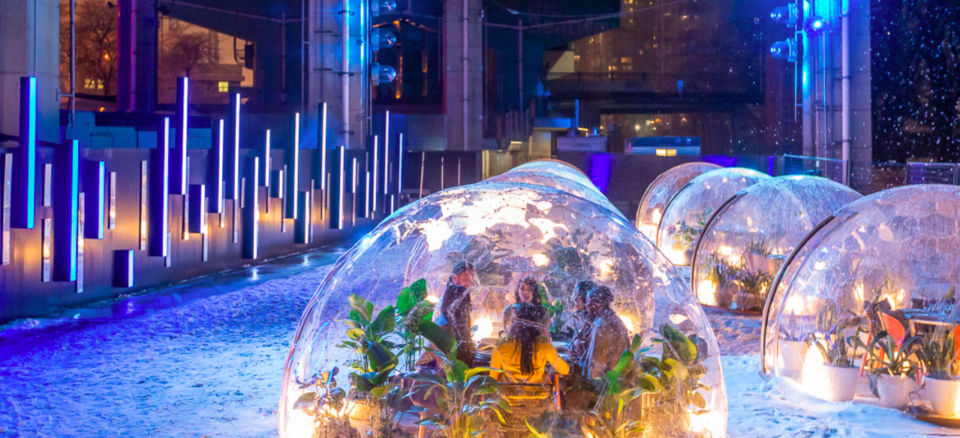When the city of Toronto forcibly cleared a homeless encampment beneath a downtown section of Gardiner Expressway only to turn it over to a luxury outdoor restaurant pop-up, people paying $545 per party got prime views of unappetizing protests. “Dinner with a View” set up heated glass domes near the site of the former camp, offering a three-course meal prepared by Top Chef Canada winner René Rodriguez “in a highly unexpected setting.” Critics called it tone deaf at best, “obscene” and “dystopian” at worst. Why didn’t planners see this reaction coming?
This is revolting.
— Kelly Thomas (@kelwinds) April 2, 2019
Emergency shelters are bursting at the seams and homeless people get evicted even from the OUTDOORS, all so the people who whine most about high taxes can eat *ONE* meal that costs more than a single month’s rent. #topoli #raisetaxes
https://t.co/rB1uCH66wN
In a statement, Dinner with a View stressed that their installation is located about a mile east of the dismantled homeless camp, saying “we are sympathetic to those impacted by the City’s actions and were in no way involved with the decision making process [to evict the camp.] No encampments were removed to make way for Dinner With A View.”
That didn’t stop organizers with the Ontario Coalition Against Poverty (OCAP) from planning their own three-course meals right next to the installation, in full view of the domes, which were prepared by volunteers and served for free. Noting the “brazenness” of the city’s decision to house a luxury dining pop-up under the very same highway as the evicted camp, they called it “Dinner With a View – of the Rich.”
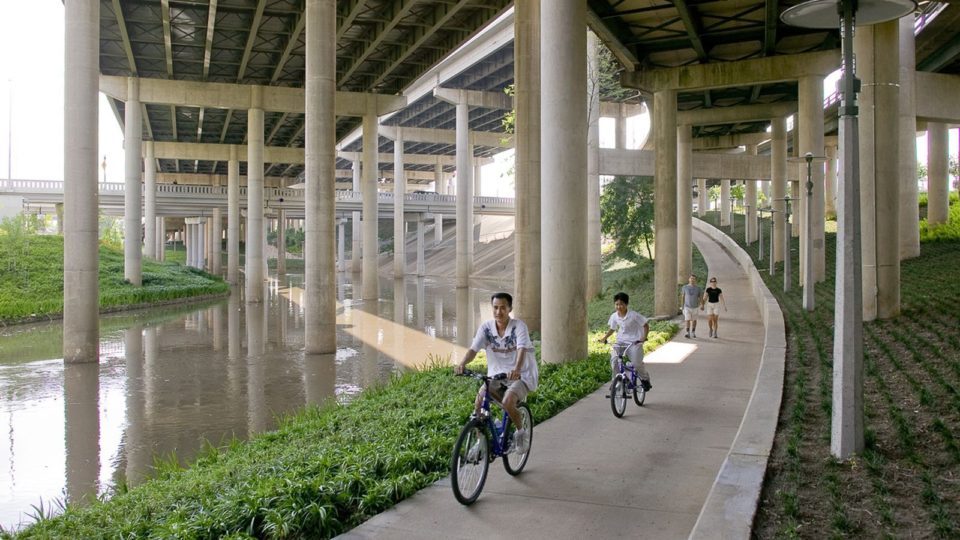
The conflict plays into a larger conversation around urban renewal, gentrification and the social and economic inequality that leads to homelessness in the first place. When we talk about “reclaiming public spaces,” particularly underpasses and other areas that are often occupied by people who have nowhere else to go, are we thinking enough about who’s being displaced by these projects, or what kind of domino effect they might have on the affordability of the neighborhood? When we say these areas are “disused,” what do we mean by that?
Historically, “urban renewal” has often been code for racist practices like redlining, the discriminatory displacement of black people from certain neighborhoods. Displaced people weren’t always compensated, and entire communities were razed as cities used federal money to make way for wealthier (and whiter) developments, often worsening poverty and overcrowding. The impacts of these practices are documented by the Digital Scholarship Lab at the University of Richmond on a website called Renewing Inequality. Today, the neighborhoods those displaced people moved into back in the ‘50s and ‘60s are frequent targets of new “urban renewal” projects, continuing the cycle.
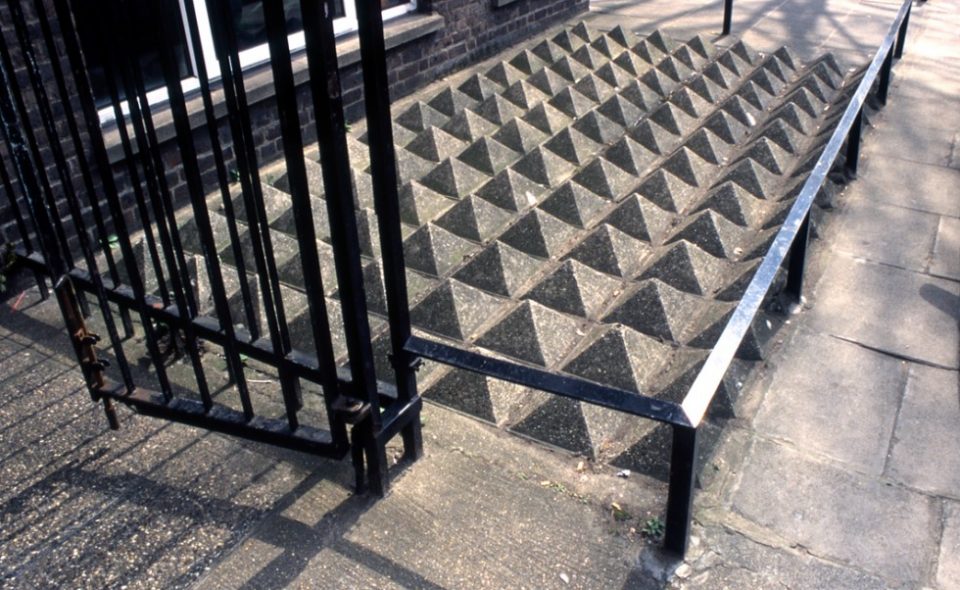
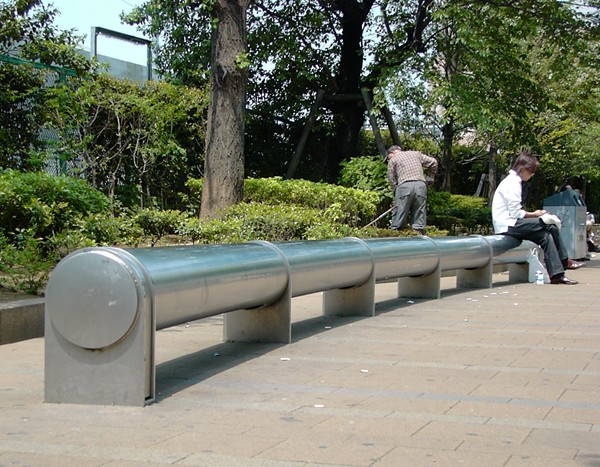
The “reclamation” of urban spaces is often a euphemism for “cleaning up” areas where the full impact of poverty is on display, making something many of us would rather not think about impossible to ignore. In cities like San Francisco and Seattle, where the sky high cost of living and lack of adequate public services produces higher than average rates of homelessness, encampments are everywhere because people simply have nowhere else to go.
City policies that criminalize homelessness (like panhandling bans and laws against urban camping) jail people for minor offenses, making it even harder for unhoused people to gain access to affordable housing, employment and health care. Plus, public restrooms are often intentionally hard to find in cities thanks to fears that unhoused people will use them, while those same people are vilified for fulfilling a basic human need in the streets.
This is often where “hostile urbanism” comes in. Benches are designed to prevent people from getting comfortable, spikes are set into concrete beneath overpasses and sidewalks are broken up by posts and planters to disallow tents. It’s as if the people who demand and design these features think they can humiliate and terrorize unhoused people, poor people and addicts out of existence. A humane solution that wouldn’t “litter” our public spaces or force us to confront evidence of extreme inequality is actually a lot more simple: ensure that people’s basic human needs are met. Those of us who create, use and enjoy urban spaces can start by making sure new projects popping up in our neighborhoods are inclusive to every member of society.
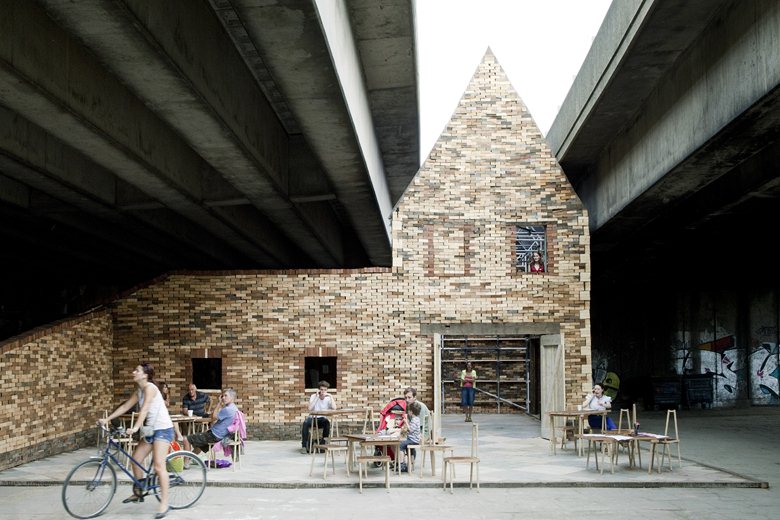
Just as design can produce objects and structures that are intentionally hostile, it can be a powerful tool for good. It’s one thing to rehabilitate a polluted industrial site or push a city to open up urban areas that have been fenced off to prevent “undesirable activity,” and then create something the entire population of the city can enjoy. Vacant lots that developers hold hostage and liminal spaces that perhaps shouldn’t exist in the first place – like the spaces beneath noisy, polluting elevated highways – can and arguably should be subverted, whether via official or guerrilla means. But when we plan and support such projects, we should consider who might be negatively affected and how we can mitigate that harm. That might require confronting our own discomfort with poverty and inequality, and the ways in which we dehumanize other people without even realizing it. It also requires taking action.
One example of what this can look like is Montreal’s plan to address homelessness, which includes a philosophy of “social inclusion” along with housing and job assistance. The plan points out that homeless people are members of the larger community, and includes strategies and activities that invite participation in the fabric of the city. It’s not perfect, and some critics say it’s still undermined by criminalization and racism, but it’s a step in the right direction. “Community-first” projects that provide housing, support and social inclusion go a long way as well.
Not every misguided “urban revitalization” project carries such overt symbols of wealth and privilege displacing the poor as Toronto’s Dinner with a View, but that doesn’t mean they don’t have a similar impact.
Top image via Dinner with a View
